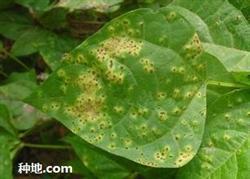How to grow beans with high yield?

How to grow beans with high yield? Please guide beans, also known as cowpeas, asparagus beans, its cultivation has a long history. The area of cultivated beans in Guangdong Province is large, which is mainly on the market from April to December. In recent years, the market demand of beans is large, and the production efficiency is high, so it has become the main vegetable crop in many areas of our province. Planting beans should choose excellent varieties according to local climate and market demand. High yield No. 3, High yield No. 4, Jindi beans and other varieties can be selected for planting white beans in our province, high yield No. 2 varieties can be selected for planting oil green beans, and special green beans can be selected for planting green beans. First, sowing and raising seedlings generally adopt the method of direct seeding. However, if there are conditions for low temperature in early spring, the method of raising seedlings and transplanting in greenhouse or small arch shed can be adopted, and the first pair of true leaves should be planted in time about 8-10 days after sowing. The border surface can also be covered with plastic film after sowing to increase the ground temperature. Second, reasonable close planting should be planted in fields with high drainage, neutral or slightly acidic loam or sandy loam. During soil preparation, deep ditches and high beds should be set up, and the border soil should be deeply turned and exposed. Guangzhou area general border width (package ditch) 1 "5" 1 "8 meters, double row planting, each hole sowing 2 seeds, plant distance of about 15 cm. Can also be interplanted with leafy vegetables, using single-row planting, between the border to grow cabbage, cabbage and other vegetables. Third, rational fertilization should pay attention to the application of sufficient base fertilizer, generally applying 1000-1500 kg of organic fertilizer, 50 kg of superphosphate and 20-30 kg of potassium sulfate per mu. Thin human feces and urine can be applied for 1 or 2 times in seedling stage. During the flowering and podding period, topdressing should be applied in time to prevent premature senescence. 20 kg compound fertilizer should be applied per mu, and then every 7-10 days. Extra-root topdressing should be carried out if necessary to reduce flower and pod drop. After the full pod stage, we should continue to strengthen fertilizer and water management, promote plant "turning flowers", prolong the harvest period and increase the yield of beans. Fourth, when the bamboo vine seedling is 25 cm high, you should insert the bamboo and draw the vine in time. The way of planting bamboo varies with the way of planting, generally using fence frame and herringbone frame. The herringbone frame is stable and more wind-resistant, and the pods will not touch the leaves when they droop, which can reduce the harm of pod borer. The time to draw the vine is usually carried out after 10:00 on a sunny day, and the vine is wound around the hedge bamboo in a counterclockwise direction. Click to get more bean planting techniques click to get more vegetable planting techniques
- Prev

How to prevent bean rust?
How to prevent bean rust? Please introduce that bean rust is mainly harmful to leaves and, in severe cases, to petioles and pods. It can make the leaves of the plant withered and yellow, the plant is short, the pods are few and small, and finally wither and die. Prevention and control measures: 1, clean the countryside, after harvest should remove the field disease and debris and centralized burning, reduce.
- Next

How to prevent rust from growing beans in autumn?
How to prevent rust from growing beans in autumn? Please introduce the growth environment of autumn planted beans with high temperature and more rainfall, coupled with the large bacterial source (summer spores) of beans planted in spring in the field. Therefore, beans planted in autumn are prone to rust, and farmers should carry out comprehensive control as soon as possible. Main symptoms: beans can be infected with bacteria throughout the growing period.
Related
- Where is it suitable to grow horseradish in China? it is expected to see the middle altitude horseradish in Alishan.
- How to prevent tomato virus disease reasonably? (Control methods included)
- Many people like to plant towel gourd on the balcony. What are the main points of this method and management?
- What crops can chili peppers be mixed with?
- Fertilization techniques and matters needing attention in Tomato
- What are the grafting techniques for peach seedlings in spring?
- Harm and control methods of root swelling disease of Chinese cabbage
- What are the pests of sweet potatoes? How to prevent and cure it?
- Symptoms, causes and Control methods of navel Rot in Tomato
- The cause of "Cucumber rotten bibcock" in Farmers' planting Cucumber and its Control Plan

